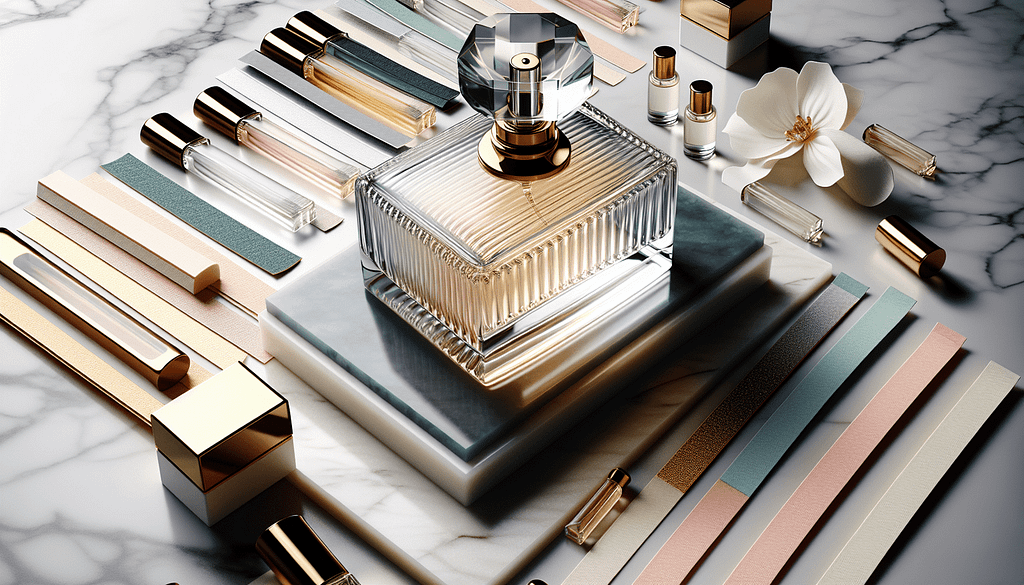Have you ever wondered how to identify the perfect fragrance that resonates with your unique style and personality? The journey to discovering an ideal scent is both fascinating and intricate, requiring a blend of knowledge, intuition, and a touch of artistry.
Understanding FrAGRANCE Types
The first step in sampling fragrances effectively is understanding the different types of fragrances available. The world of fragrances is diverse, ranging from timeless classics to unique niche scents. Familiarity with these categories can help narrow down your choices and guide your sampling process.
Eau de Parfum vs. Eau de Toilette
Eau de Parfum (EDP) and Eau de Toilette (EDT) are two commonly known types of fragrances, each offering distinct characteristics.
- Eau de Parfum (EDP): Contains a higher concentration of fragrance oils, typically around 15-20%. It is long-lasting and intense, making it suitable for evening wear or special occasions.
- Eau de Toilette (EDT): Contains a lower concentration of fragrance oils, usually around 5-15%. It is lighter and more refreshing, ideal for daytime wear.
Niche Perfumes
Niche perfumes are crafted by specialized, often independent, perfume houses. They are known for their unique compositions and high-quality ingredients. Sampling niche perfumes can introduce you to innovative and exclusive scents that stand out from mainstream offerings.
Fragrance Families
Understanding fragrance families can further enhance your sampling experience. Fragrances are typically categorized into families based on their predominant notes:
- Floral: Light, romantic, and often comprising various flower-based notes.
- Oriental: Warm, exotic, and rich with notes like vanilla, spices, and resins.
- Woody: Earthy and grounded, featuring notes like sandalwood, cedar, and vetiver.
- Fresh: Crisp and invigorating, often featuring citrus, green, or aquatic notes.
The Importance of Personal Preference
Selecting a fragrance is deeply personal. It involves finding a scent that resonates with your tastes, evokes desirable emotions, and complements your lifestyle.
Personal Style and Lifestyle
A fragrance should align with your personal style and daily activities. For instance, a light, fresh scent may be more suitable for an active person, while a rich, oriental fragrance may be better suited for someone with a sophisticated, evening-oriented lifestyle.
Mood and Memories
Fragrances have the power to evoke moods and memories. Consider what emotions or memories you want your fragrance to evoke. For example, floral scents can be uplifting and romantic, while woody scents may bring comfort and calmness.
Effective Sampling Techniques
Once you have a basic understanding of fragrance types and personal preferences, the next step is effective sampling. Here are some best practices to ensure you make the right choice.
Start with Blotter Strips
Begin your sampling process by using blotter strips. These strips allow you to test multiple scents without overwhelming your senses. Remember to label each strip to keep track of the fragrances you are sampling.
Limit the Number of Fragrances
Avoid sampling too many fragrances at once. Smelling more than four to five scents in one session can cause olfactory fatigue, making it difficult to discern each fragrance’s unique characteristics.
Use Your Skin for Final Testing
Once you have narrowed down your choices using blotter strips, apply the finalists to your skin. Your skin’s chemistry interacts with fragrances, which can alter the scent. Observing how a fragrance evolves on your skin over a few hours will give you a true sense of its lasting impression.
Allow Time for Dry-Down
Fragrances change over time due to the evaporation of top and heart notes, leaving the base notes. Allow the perfume to dry down for at least an hour before making a decision. This process reveals the fragrance’s true character and longevity.
Factors Influencing Fragrance Selection
Several factors influence how a fragrance smells on your skin and how long it lasts. Understanding these factors can help you make an informed decision.
Skin Chemistry
Your skin’s pH level, oiliness, and temperature can affect how a fragrance develops on your skin. What smells divine on a friend may smell entirely different on you. Therefore, it’s essential to test fragrances on your skin before purchasing.
Climate and Season
Climate and season play a significant role in how a fragrance performs. For instance, lighter, fresh scents are suitable for warmer weather, while heavier, spicy fragrances are better for colder months.
- Spring/Summer: Opt for fresh, citrusy, or floral fragrances.
- Fall/Winter: Choose warm, spicy, or oriental fragrances.
Occasion
Different occasions call for different scents. Consider having multiple fragrances for various situations—one for daily wear, another for formal events, and perhaps a special one for intimate gatherings.
Longevity and Sillage
- Longevity: Refers to how long a fragrance lasts on your skin.
- Sillage: Refers to the trail of scent left behind by the wearer.
Checking user reviews and sampling can give you an idea of a fragrance’s longevity and sillage, helping you decide if it suits your needs.
Sustainable and Eco-Friendly Options
The growing awareness of environmental impact has led many to seek sustainable and eco-friendly fragrance options. These fragrances minimize harm to the environment and promote ethical practices.
Natural and Organic Ingredients
Look for fragrances made with natural and organic ingredients. These are less likely to contain synthetic chemicals that can be harmful to both your skin and the environment.
Eco-Friendly Packaging
Consider the packaging of the fragrance. Opt for brands that use recyclable or biodegradable materials to reduce environmental waste.
Cruelty-Free and Vegan Options
Choose fragrances from brands that do not test on animals and offer vegan options. This ensures that your fragrance choice aligns with ethical and sustainable principles.
Making Your Fragrance Last Longer
Once you’ve selected your ideal fragrance, the next step is to ensure its longevity. Here are some tips to make your fragrance last longer throughout the day.
Proper Storage
Store your fragrance in a cool, dry place away from direct sunlight and heat. Exposure to light and heat can degrade the fragrance’s quality and reduce its shelf life.
Moisturize Your Skin
Applying fragrance on moisturized skin can enhance its longevity. The oils in moisturizers help to lock in the scent. Opt for an unscented lotion to avoid clashing with your fragrance.
Layering Fragrances
Layering involves using multiple scented products to build a cohesive, long-lasting fragrance. You can start with a scented body wash, followed by a matching lotion, and then apply your perfume. This technique not only prolongs the scent but also adds depth to it.
Target Pulse Points
Apply your fragrance to pulse points where the skin is warmest, such as the wrists, neck, behind the ears, and inner elbows. The warmth helps to diffuse and amplify the scent.
Avoid Rubbing
Avoid rubbing your wrists together after applying fragrance. This action can break down the fragrance molecules and diminish the scent’s intensity.
Spritz Hair and Clothing
For added longevity, lightly spritz your hair and clothing with fragrance. Be cautious with delicate fabrics, as some fragrances can cause staining.
Embracing the Power of a Signature Scent
Finding a signature scent is a transformative experience. It becomes an integral part of your identity, leaving a lasting impression on everyone you encounter.
Reflecting Your Personality
A signature scent should reflect your personality and individuality. It’s a unique way to express yourself without saying a word.
Creating Lasting Memories
Our sense of smell is closely linked to memory. A signature scent can evoke memories and emotions, creating a lasting impression on others.
Enhancing Confidence
Wearing a fragrance that you love can boost your confidence and elevate your mood. It’s an invisible accessory that completes your overall look and helps you make a statement.
Conclusion
Choosing the perfect fragrance is an art, combining personal preference, understanding fragrance types, and effective sampling techniques. By considering factors like skin chemistry, climate, and occasion, and by embracing sustainable options, you can find a fragrance that truly resonates with you. Remember, your fragrance is a powerful tool for self-expression, confidence, and creating lasting memories.
In the enchanting realm of fragrances, every spritz tells a story, reflecting the multifaceted beauty of its wearer. Whether you’re seeking the allure of timeless classics or the charm of niche perfumes, this guide equips you with the knowledge to embark on a glamorous adventure through the world of women’s fragrances. So, take your time, explore your options, and enjoy the journey to finding your perfect scent.





